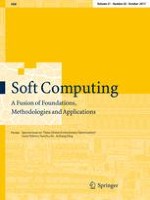21.07.2016 | Focus
An online learning neural network ensembles with random weights for regression of sequential data stream
Erschienen in: Soft Computing | Ausgabe 20/2017
EinloggenAktivieren Sie unsere intelligente Suche, um passende Fachinhalte oder Patente zu finden.
Wählen Sie Textabschnitte aus um mit Künstlicher Intelligenz passenden Patente zu finden. powered by
Markieren Sie Textabschnitte, um KI-gestützt weitere passende Inhalte zu finden. powered by
